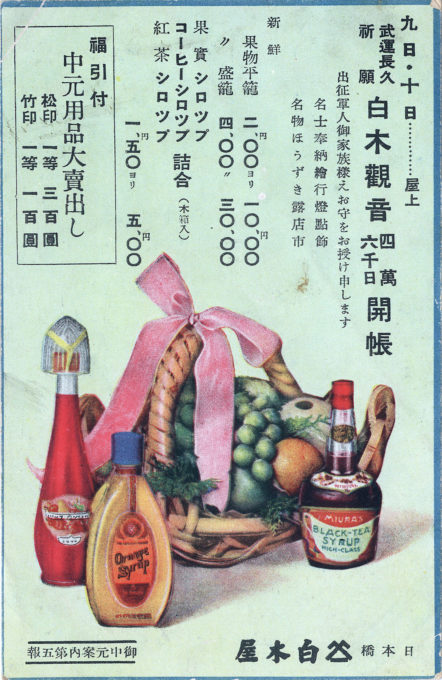
Shirokiya Department Store advertising postcard, Nihonbashi, Tokyo, c. 1930, picturing a gift basket (omiyage) available for sale comprised of dessert syrups (or beverage concentrates?), e.g. orange syrup, black tea syrup, coffee syrup, berry syrup.
See also:
Shirokiya Department Store, c. 1910-1940.
Mitsukoshi Department Store advertising postcard, Nihonbashi, Tokyo, c. 1905.
Japanese Department Stores, c. 1930.
“Even as it assumed a transcendent position within the modern cityscape and offered itself as a school for the modern, the [Japanese] department store poured its energies into the retail of what it pronounced to be ‘modern life’, marketing not just a host of novel commodities but a new way of thinking about and experiencing everyday life.
“In order to expand its market, the department store worked to increase the commodification of daily life and expand the list of ‘daily necessities’ sold on its shelves. It declared the consumption of such daily necessities to be the essence of modern life, and defined the modern in terms of ceaseless novelty and progress.”
– “Marketing the Modern: Department Stores, Consumer Culture, and the New Middle Class in Interwar Japan”, by Louise Young, International Labor and Working-Class History, No. 55, Class and Consumption, Spring 1999

